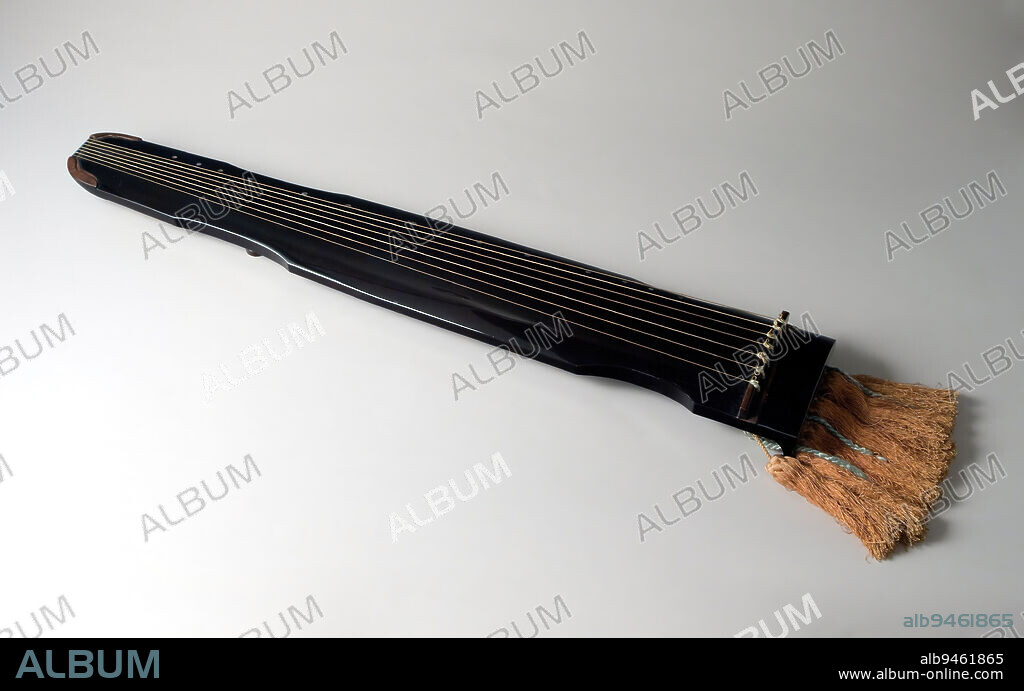alb9461865
Zither named 'Flowing Water', 1794, Nakamura Stetsu, 3 × 32 3/8 × 5 3/8 in. (7.62 × 82.23 × 13.65 cm), Wood with black lacquer and mother-of-pearl inlay; silk tassels, Japan, 18th century, The seven-stringed zither, called kin in Japanese, has been played in China (where it is called qin) for at least 3,000 years. It was introduced to Japan by the 700s and was a common instrument in the cultural sphere represented in The Tale of Genji. This example of a kin was created by an artist of the celebrated Nakamura family of lacquerers, all of whom used the given name Stetsu. The artist of this zither, which is dated to 1794, was probably the fifth-generation Nakamura Stetsu, who lived from 1764 to 1811. The Nakamura lacquerers maintained relationships with Japans leading cultural trendsetters and were celebrated for their craftsmanship.

|
Ajouter à une autre Lightbox |
|
Ajouter à une autre Lightbox |



Avez-vous déjà un compte? S'identifier
Vous n'avez pas de compte ? S'inscrire
Acheter cette image.
Sélectionnez l'usage:

Légende:
Voir la traduction automatique
Zither named 'Flowing Water', 1794, Nakamura Stetsu, 3 × 32 3/8 × 5 3/8 in. (7.62 × 82.23 × 13.65 cm), Wood with black lacquer and mother-of-pearl inlay; silk tassels, Japan, 18th century, The seven-stringed zither, called kin in Japanese, has been played in China (where it is called qin) for at least 3,000 years. It was introduced to Japan by the 700s and was a common instrument in the cultural sphere represented in The Tale of Genji. This example of a kin was created by an artist of the celebrated Nakamura family of lacquerers, all of whom used the given name Stetsu. The artist of this zither, which is dated to 1794, was probably the fifth-generation Nakamura Stetsu, who lived from 1764 to 1811. The Nakamura lacquerers maintained relationships with Japans leading cultural trendsetters and were celebrated for their craftsmanship.
Crédit:
Album / quintlox
Autorisations:
Modèle: Non - Propriété: Non
Questions sur les droits?
Questions sur les droits?
Taille de l'image:
5048 x 3146 px | 45.4 MB
Taille d'impression:
42.7 x 26.6 cm | 16.8 x 10.5 in (300 dpi)
Mots clés:
 Pinterest
Pinterest Twitter
Twitter Facebook
Facebook Copier le lien
Copier le lien Email
Email
